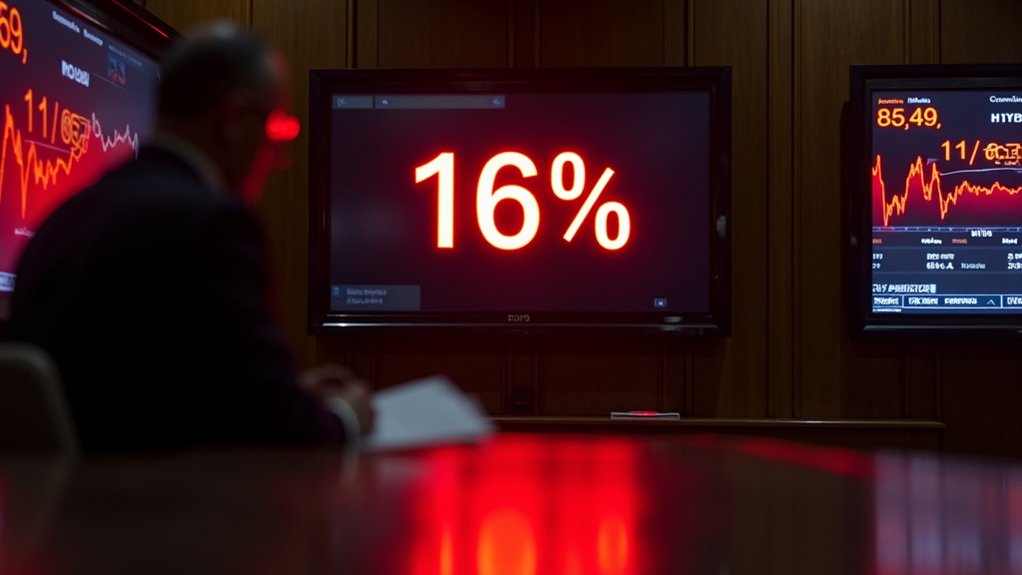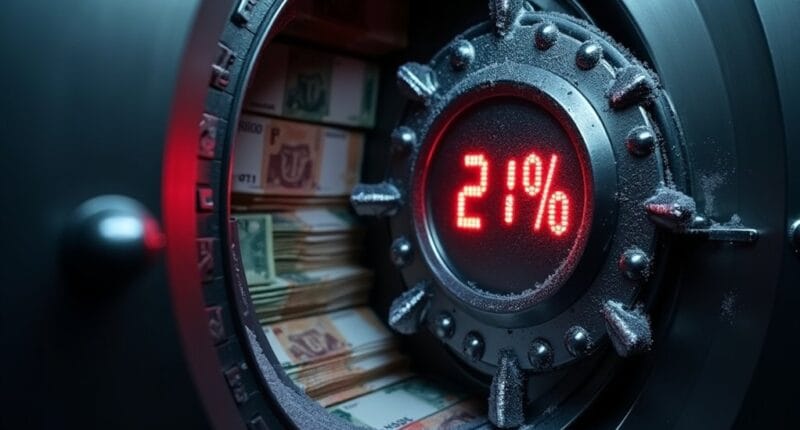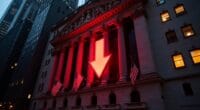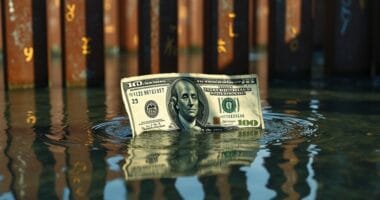Russia’s central bank is holding firm at a punishing 21% interest rate as inflation refuses to back down. With prices still soaring at 10.2%, policymakers have slammed the brakes on any rate cuts despite mounting pressure. The aggressive 1,350 basis point hike since mid-2023 hasn’t tamed the beast yet. Frozen foreign reserves and persistent consumer demand aren’t helping matters. The economic road ahead looks bumpy, and officials are bracing for a long, challenging journey.

Russia’s central bank slammed the brakes on rate cuts once again, keeping its key rate frozen at a sky-high 21% as inflation refuses to back down. With annual inflation stubbornly hovering at 10.2%, double-digit price growth continues to plague the economy, making the central bank’s 4% target look like a distant dream.
Sure, there’s been some improvement. Inflation cooled to 9.1% in early 2025, down from a painful 12% at the end of 2024. But let’s be real – Russians are still spending like there’s no tomorrow, and suppliers just can’t keep up. The result? Prices keep climbing. Similar to the deflationary spiral effect, this upward price momentum could create a self-reinforcing cycle.
Inflation may be cooling, but Russians’ unstoppable spending spree keeps pushing prices higher despite suppliers’ best efforts.
The central bank isn’t taking any chances. After hiking rates by a whopping 1,350 basis points since mid-2023, they’re determined to keep things tight. Really tight. They’re warning this high-rate party could last “a long period” – their words, not ours. With frozen foreign reserves of over $300 billion still locked away by Western allies, Moscow’s monetary options remain limited.
The bizarre thing is, even with these sky-high rates, people are still shopping up a storm. Supply chains are gasping for air, trying to match this spending spree. Rising household incomes and budget expenditures fuel demand. At least the labor shortages are easing a bit, but it’s hardly enough to matter.
Banks have barely budged on their deposit rates, keeping them clustered around that 21% mark. Semi-annual deposits are still the sweet spot for savers, while annual deposits are trailing slightly at 20.62%. Not that anyone’s complaining about these returns.
Looking ahead, the central bank is betting inflation will cool to 7-8% by year-end, eventually hitting their 4% target in 2026. Market analysts are more optimistic, predicting rate cuts starting mid-2025. They’re expecting about 425 basis points in total cuts this year – though nobody seems to agree on the exact timing.
But here’s the kicker – the central bank isn’t ruling out more rate hikes if things go south. Because apparently, 21% isn’t high enough if inflation decides to throw another tantrum.





